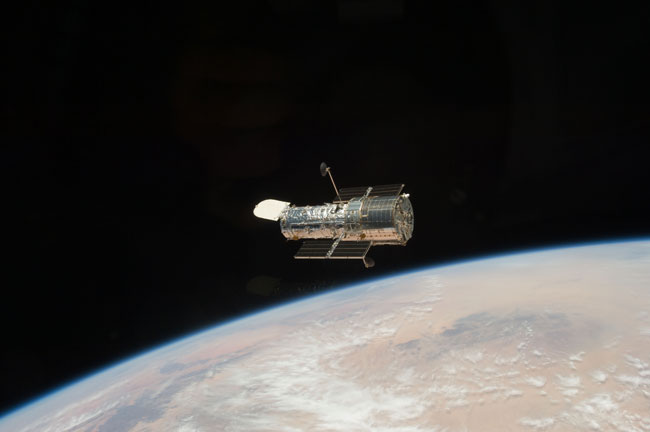Spy Satellite Telescopes Donated to NASA 'Came Out of the Blue'

ANCHORAGE, Alaska — A pair of space telescopes that were donated to NASA from the secretive National Reconnaissance Office could be repurposed for a wide variety of science missions, NASA officials say, but it will likely be years before the agency's budget can accommodate them.
The two spy satellite telescopes were originally built for planned NRO space-based surveillance missions, but they were never used. Earlier this month, on June 4, NASA announced its acquisition of the telescopes, and the agency's intention to use them for future astronomical research.
"About a year ago, NASA was contacted — this was long before I came onboard — saying they had some residual hardware that might be interesting to NASA," said John Grunsfeld, the associate administrator for NASA's Science Mission Directorate. "Folks did take a look at it. Unfortunately, it was classified at that time, so it took a while for the National Reconnaissance Office to declassify it and figure out what the right approach is."
Grunsfeld co-hosted a town hall-style gathering Tuesday (June 12) to discuss NASA's budget and plans here at the 220th meeting of the American Astronomical Society.
The two telescopes have main mirrors that measure nearly 8 feet wide (2.4 meters), making them comparable to the veteran Hubble Space Telescope, which was launched into orbit 22 years ago. Grunsfeld called the donated optical hardware "very high quality."
"From the preliminary looks, this is a gift that, I think, we're going to really appreciate in the future," he added.
The telescopes are currently being stored in Rochester, N.Y., in facilities belonging to the hardware's manufacturer, ITT Exelis Geospatial Systems. The cost to keep them in storage is about $70,000 a year, Grunsfeld said. [Photos: Declassified U.S. Spy Satellites]
Breaking space news, the latest updates on rocket launches, skywatching events and more!
"It's not insignificant, but it's not something that's unmanageable," he said.
One possible application for the telescopes is as a base for NASA's Wide Field Infrared Survey Telescope (WFIRST), which is being designed to hunt for dark energy. This mission was identified as a top science priority in the astrophysics Decadal Survey, a report put out every 10 years by an independent review panel that represents the entire scientific community. The report identifies the main goals NASA should pursue for the next decade.
"It really is a tremendous opportunity that we have to look at this and say: if we don't make any changes to it, what science could we do to advance the scientific goals we have, and see if we can use this as something that actually does leverage us quite far down the road in the mission?" Grunsfeld said. "[In] the current budget climate, there are no new starts for large missions, like WFIRST, until we open up a funding wedge."
The Decadal Survey identified WFIRST as a key priority after the next generation James Webb Space Telescope, an $8.8 billion telescope that will use its infrared eyes to peer back into the universe's 13.7 billion-year history. The James Web Space Telescope is expected to launch in 2018.
According to President Obama's fiscal year 2013 budget request, NASA would receive about $17.7 billion for next year — about $59 million less than in 2012.
Given budget projections for the next several years, the agency is grappling with how to effectively operate in an extremely confined fiscal environment. As such, NASA does not anticipate being able to dedicate any funding to the newly acquired telescopes until the James Webb Space Telescope successfully launches, Grunsfeld said.
"This kind of came out of the blue," he said. "Budget planning starts quite far in advance."
In the meantime, NASA is investigating different uses for the telescopes, and hopes to have input from the scientific community to guide the decision-making process.
"Let me give you an idea," Grunsfeld said. "This is still very preliminary, but I think there's one space telescope in this collection of hardware. Now, there are two … optical systems with structure, but since we have, at the moment, money exactly for zero telescopes, I don't want to get too greedy and say, Hey, let's build two telescopes. But I'd like all of you, and the whole community, to think about possible uses."
Follow Denise Chow on Twitter @denisechow or SPACE.com @Spacedotcom. We're also on Facebook & Google+.

Denise Chow is a former Space.com staff writer who then worked as assistant managing editor at Live Science before moving to NBC News as a science reporter, where she focuses on general science and climate change. She spent two years with Space.com, writing about rocket launches and covering NASA's final three space shuttle missions, before joining the Live Science team in 2013. A Canadian transplant, Denise has a bachelor's degree from the University of Toronto, and a master's degree in journalism from New York University. At NBC News, Denise covers general science and climate change.
